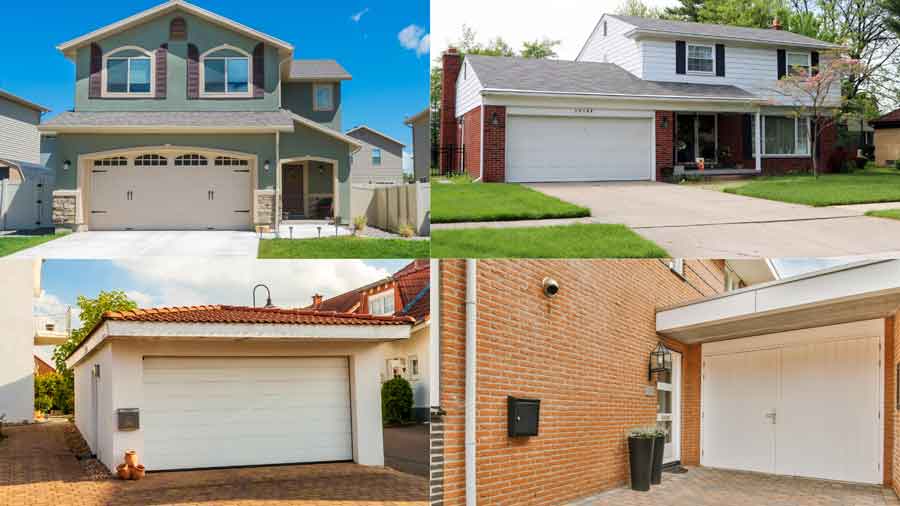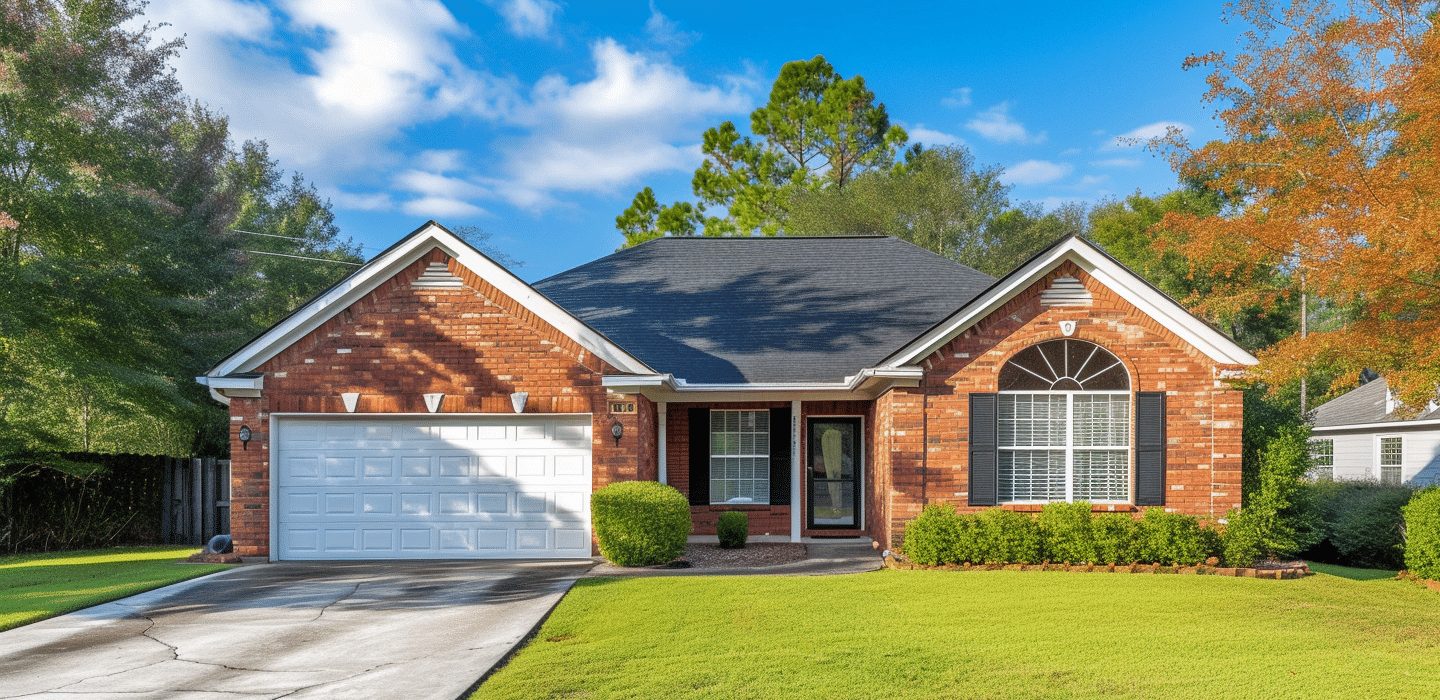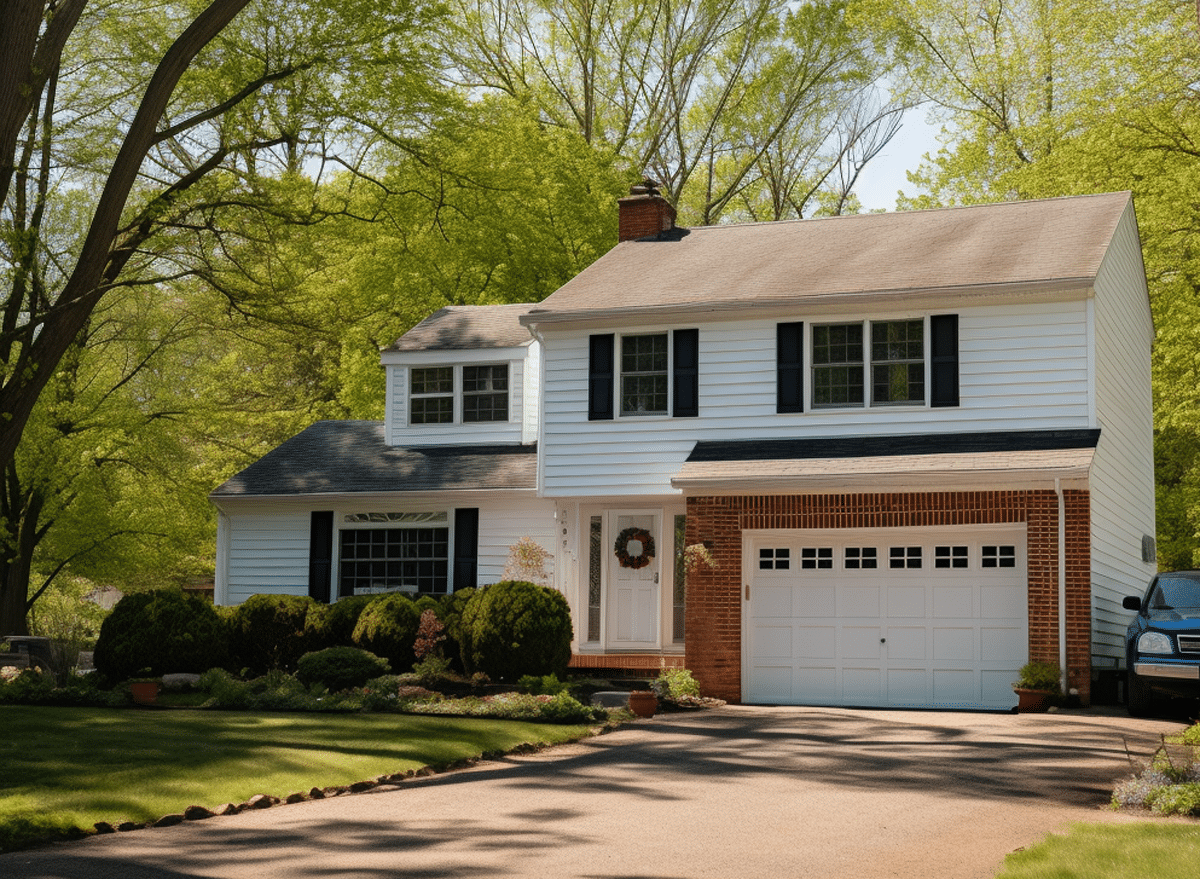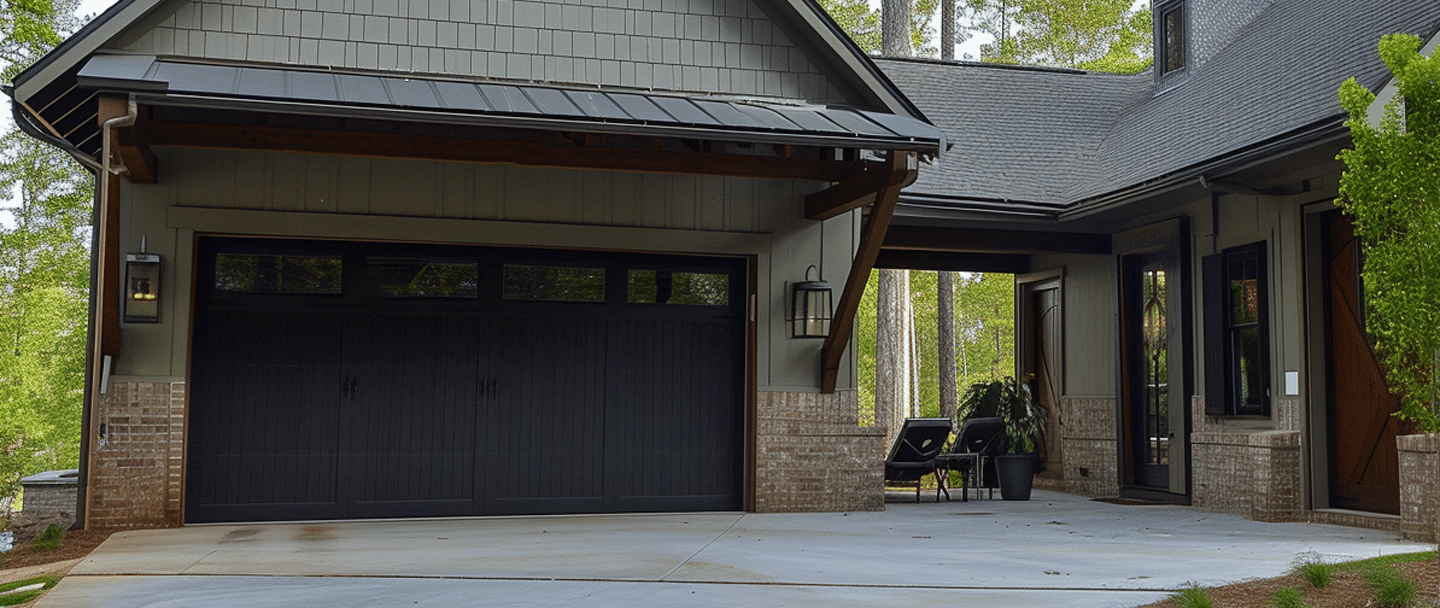You’ve probably heard about attached and detached garages before. But did you know there are two other types of garages, as well?
When you go to sell your current home or buy your next one, it’s important to use the proper terminology so prospective buyers can quickly find your home.
This brief article will cover the differences between the different types of garages: attached, semi-attached, detached, and built-in garage.

Types of Garages: A Closer Look
Here are the four main types of garages commonly found in residential construction:
Attached Garage: An attached garage is a garage that is physically connected to the main house. It is usually located on the side or front of the house and shares a wall with the main living space.
In addition to the garage door, attached garages include a main entry door for accessing the main house.
Homeowners can enter the house directly from the garage without going outside.

Built-in Garage: A built-in garage is a garage that is designed as part of the main house structure. Like an attached garage, the homeowner can enter the house from the garage without going outside.
However, a built-in garage has living space directly above the garage, while an attached garage does not.

Detached Garage: A detached garage is a garage that is not physically connected to the main house.
This standalone structure is typically located in the backyard or side yard of the property and is often designed to complement the style of the main house.
Detached garages may also offer additional living space, such as an upstairs loft, but this is not required.

Semi-Attached Garage: A semi-attached garage is a hybrid between an attached and detached garage, offering some of the benefits of both types.
Like an attached garage, a semi-attached garage shares a common wall or connection with the main house. Note that a covered breezeway between the home and garage will still count.
However, there is no access from the garage directly into the home. The homeowner must go outside to get from one to the other.

What is the Difference Between Each Type of Garage?
In this section, we’ll discuss the differences between each type of garage. Often, it comes down to how the garage connects with the home.
| Feature | Attached | Built-in | Detached | Semi-Attached |
|---|---|---|---|---|
| Physically connected to main house | ✓ | ✓ | X | ✓ |
| Shares a common wall with living space | ✓ | ✓ | X | ✓ |
| Can access the main house from inside garage | ✓ | ✓ | X | X |
| Living space directly above garage | X | ✓ | X | X |
| Standalone structure | X | X | ✓ | X |
| May offer additional living space | X | ✓ | ✓ | ✓ |
| Requires going outside to access home | X | X | ✓ | ✓ |
| Covered breezeway connection (Optional) | X | X | X | ✓ |
- Attached vs. Built-in Garage: An attached garage shares a wall with the main house but does not have living space above it. A built-in garage is integrated into the house with living quarters directly above, sharing both walls and roof with the main structure.
- Attached vs. Detached Garage: An attached garage is physically connected to the house, allowing direct indoor access without going outside. A detached garage is a separate structure located away from the house, necessitating outdoor travel to access the home. There are no connecting walls or breezeways between an attached and detached garage.
- Attached vs. Semi-Attached Garage: Both attached and semi-attached garages share a common wall with the house. However, an attached garage provides direct access to the home’s interior from inside the garage. A semi-attached garage requires you to exit outdoors to enter the house.
- Built-in vs. Detached Garage: A built-in garage is part of the home’s main structure, with living space above and seamless integration into the house’s design. A detached garage stands alone, separate from the main house.
- Built-in vs. Semi-Attached Garage: Built-in garages are fully incorporated into the home’s structure, complete with living areas above them. Although a semi-attached garage is connected to the house by a wall or breezeway, they do not allow for direct entry into the home from the garage and lack living space above.
- Detached vs. Semi-Attached Garage: The difference between a detached garage and a semi-attached garage is how they are connected to the main house. A detached garage is completely separate, offering no physical connection to the house. A semi-attached garage shares a common wall or is linked by a breezeway but still requires outdoor access to the home.
This exhaustive comparison elucidates the nuanced distinctions between the various garage types. It emphasizes their connectivity, access to the main house, and structural integration, catering to diverse homeowner preferences and needs.
What Does the IBC Say About Attached vs. Built-in Garages?
The International Building Code (IBC) regulates the design, construction, and occupancy of buildings and structures. It does not distinguish between attached garages and built-in garages as separate categories but instead addresses garages as a whole.
The IBC provides requirements for garages, including fire resistance, ventilation, and means of egress. This ensures buildings are safe for occupants and do not pose a hazard to the main house or neighboring properties.
The IBC requires that garages be separated from the main house by a fire-rated wall and ceiling assembly to prevent the spread of fire between the two structures.
Each garage must have at least one exit door that leads directly to the outside or to a stairway or hallway that leads outside.
Overall, whether the garage is attached or built-in, it must comply with the same requirements set forth by the IBC to ensure it is safe and functional.
